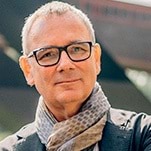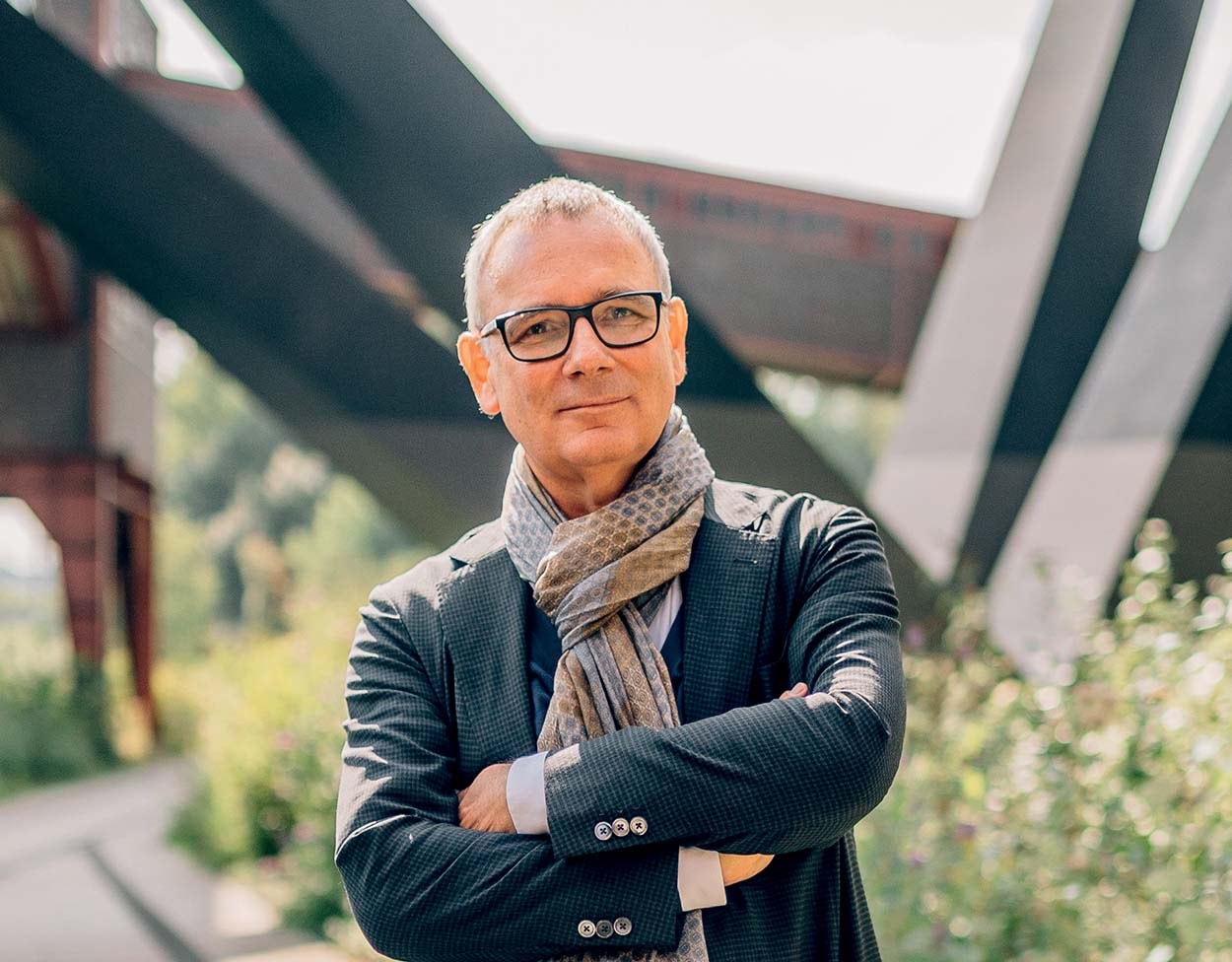
The importance of breaking the mould
Landscape architect Andreas Kipar: in recent years the way we think about cities has changed radically
Landscape architect Andreas Kipar: in recent years the way we think about cities has changed radically
Andreas Kipar, you are one of the international pioneers of landscape design, especially in urban settings. Can you briefly tell us about some of your projects?
We are working on several projects with our team in Italy, Switzerland and Germany: for over 30 years, the concept underpinning all these projects has been the fact that the landscape comes first, it is the starting point of every process, however big or small, short or long term; that is evident in every project: from Piazzale Loreto, where we will work from the spatial concept of a city square to restore this part of the city back to Milan, to MIND (Milano Innovation District) that will transform the Expo 2015 area into an innovation district and reconnect this part of the city with its surroundings, strengthening the very identity of the place itself and its community. Based on the principle "Landscape First", a landscape project becomes a means of generating new urban identities defining an urban ecosystem according to the principles of sustainability and innovation.
The landscape is everything and everything must start from the landscape to achieve sustainable growth. Now that the dialectics between architecture and nature are increasingly pressing and strategic, how do you envisage the role of landscape design in the short and long term?
Over recent years the way we envisage cities has changed radically as more liveable urban landscapes have been developed with greenery playing a crucial role in building landscape narratives capable of regenerating urban communities and territories through a sustainability approach based on connecting back with nature.
Open space creates urban space, a theory that has already been successfully put to the test in urban areas like Milan with its so-called "green rays" and in the city of Essen in the Ruhr region (Germany) that was made thee Green Capital of Europe in 2017. The imperative is to recover sociality and promote the presence of inner-city nature in the sense of safe and "healthy" refuges.
The year 2020 also brought about a profound rethinking of the relationship between building types and urban morphology and has resulted in a real injection in pace in working from home. The consequences of this have included greater functional demands for housing, the call for greater 'proximity' in neighbourhoods and a rethinking of tall buildings for the services sector that increasingly 'visually' characterise services centres.
Our mission to "Reconnect people with nature" offers a compromise between the need to create new architecture and the need to create a new cityscape. A return to nature is possible when new areas are made available by building upwards. Our approach to design aims to tackle the dialectics between the verticality of buildings and horizontality of the cityscape: I am in favour of a "holistic" side of the new urban landscape that is based on a return of nature, partly by reclaiming land to be used for cultivation purposes on the roofs of these buildings themselves (as technology now increasingly makes possible), without forgetting the need to genuinely revitalise urban land, which has been mistreated for too long.
from a different angle. What does that mean for architects, administrators and for all of us inhabitants, not to mention people visiting cities and tourists?
Nowadays, green areas are no longer just decorative, they now serve an infrastructural purpose creating a new image of urban nature. A city can be ‘dressed up’ differently, but only if its ‘body’ is considered first, so bringing nature back into the city is no longer just a necessity in terms of the landscape but also structurally and functionally in relation to urban management and people's wellbeing. From an ecosystem perspective, urban greenery is now a means of managing rainwater, controlling the microclimate, reducing pollutants and providing healthy spaces rich in biodiversity. In city centres, for example, it is also a matter of transforming uninviting squares into more attractive places. This will benefit all city users, because a place with a pleasant atmosphere becomes a real attraction, a place to be.
How crucial is the role played by sustainable technologies and materials?
In the age of ecological and digital transition, the benefits of nature to people must be monitored and quantified. Working with LAND Research Lab®, we started with BIM, Building Information Modelling, to develop LIM (Landscape Information Modelling®). That is to say, to incorporate the issue of the landscape in new design and control tools. LIM allows us to measure the landscape over time; predictions related to a dynamic system by means of digital simulation takes on fundamental importance in our work. It is no longer a question of just planting a tree or creating a new green area, but also of being able to calculate, season by season and year by year, its contribution in terms of reducing pollution, increasing biodiversity and reducing warming. Only then will landscape be taken into account in city/company budgets, raising people’s awareness so the motto "Reconnecting People with Nature" can be transformed into real political and economic action.
First people, then spaces and architecture. That is one of the key concepts we see in many of your projects, where, for example, starting with people, a square is no longer just a square, it turns into a community. How is this new approach implemented on a design level?
The landscape is an expression of the public realm in the sense of being a society made up of people. We focus on human beings, who are increasingly expressing the desire to have nature within easy reach. Attention to people necessarily means attention to living space. This is even more true in densely populated cities like Paris, Rome or Milan, where the rediscovery of public space requires a great deal of synergy/governance on a public/private level. In urban regeneration, there is a need to move on from designing green space to genuine urban landscape design. In the near future, cities will be increasingly populated and "lived in" through their public space, which must, therefore, become a container of across-the-board services. The real challenge is not the number of trees to be planted but the quality that these trees can introduce into public space.
There are lots of young professionals in your team and you devote a lot of energy to training the architectural designers of the future. Based on your experience, what are the most important lessons for them to learn?
In this decade of sustainability, the next generation has a truly crucial role to play. Let's start with ‘Fridays for Future’: for years various leading figures have been warning us about the implications of climate change. But the real game changer has been the empathic personal/individual involvement of Greta Thunberg.
The best thing we can do for young people nowadays is to give them space for their creativity, actions and thoughts, offering them the opportunity to be radical in asking questions and enforcing the UN goals of the 2030 Agenda for Sustainable Development. Our firm, which brings together people from over 20 countries with an average age of 32.5 years, is committed to that: building a platform for future generations, so they can use their imagination, their creativity and, above all, their "Haltung" (their attitude) to act ethically to build the kind of world we need. Respecting nature and reconnecting with nature itself.








